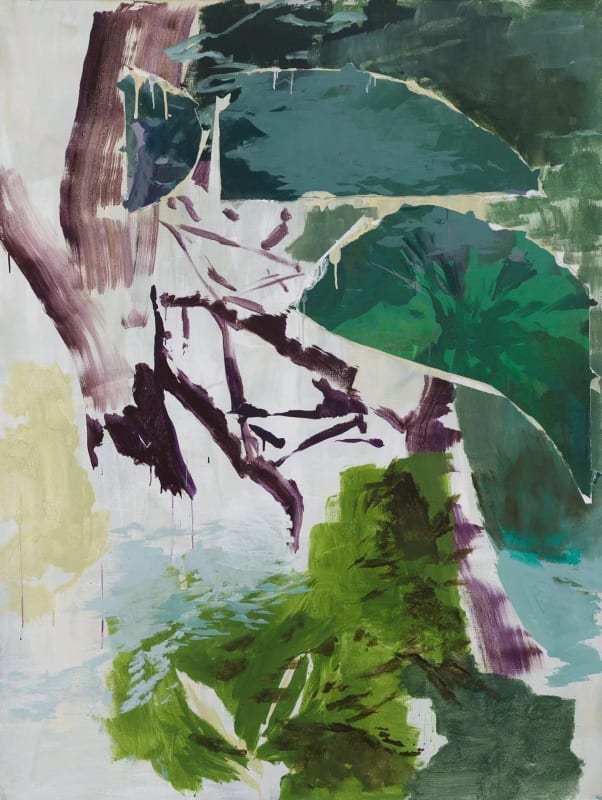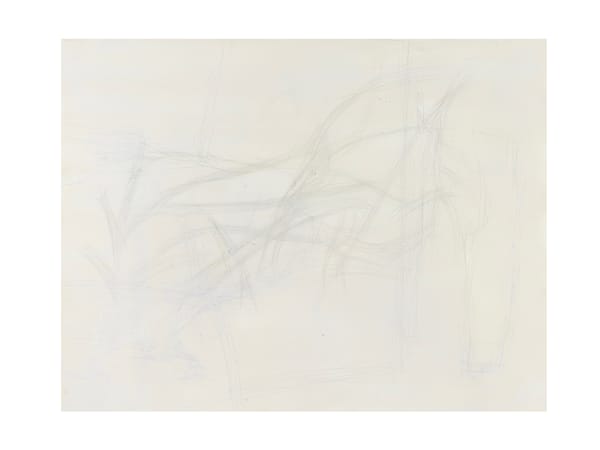Hippocampus Capsule: Group Exhibition
Past exhibition
Installation Views
Overview
Hippocampus Capsule features paintings, installations, and sculptures by artists CAO Zaifei, CHANG Ling, GUO Haiqiang, LI Shan, LIU Ren, LU Song, WANG Ningde, WU Houting, ZHANG Peiyun, ZHANG Ruyi, ZHANG Yunyao, James CARL and Kumi Usui at Don Gallery on July 8, 2023. Thirty pieces of works are placed in the gallery space to illustrate the theme "Hippocampus Capsule" reflectively.
In neuroscience, the hippocampus is hidden within the brain's temporal lobe. The earliest description of the hippocampus comes from the Venetian anatomist Julius Caesar Aranzi (1587), who likened it first to a seahorse. The hippocampus is part of the limbic system. It plays essential roles in the consolidation of information from short-term memory to long-term memory, stringing together past and future, and in spatial memory that enables navigation. Through a retrospective of the artists' works created between 2011 and 2022, Hippocampus Capsule suggests the extension, transformation and change of their concepts and hints at intertwined and complementary socio-historical narrative contexts.
Hippocampus Capsule coalesces GUO Haiqiang, LIU Ren, LU Song, WANG Ningde and ZHANG Yunyao's works and hints at the artists' unifying and continually deepening thematics, respectively. GUO Haiqiang infuses sculptural structure into painting, with a sense of relief and installation formed by branches and stacked oil paint, as he meditates on and traces four seasons of Zhongnan Mountain, leading us to the memories that should belong to the natural. The dual characteristics implied in LIU Ren's work - temporality and presence - are continuously explored and reinterpreted in his practice. In Panta Rhei, the images of ocean resonate with the phrase's original meaning- "everything flows" – “although nothing is eternal, yesterday may appear once more in the memory.” LU Song's works are inspired by different literary art forms such as fiction, film and theatre, conveying a complex sensory experience in deconstructing and reconstructing images; the work inspires multiple narratives within the same thread of memory. From Form of Light to Photogram, WANG Ningde engages with photography through photography’s philosophical ontology and experimentation between light, shadow and images; as Susan Sontag notes, "A photograph is not just an image (as a painting is an image), an interpretation of the real; it is also a trace, something topographic directly from the real, like a footprint or a model of a dead person's face." The influence of Greek sculptures is evident in ZHANG Yunyao's felted paintings, where images and tactile memories of classical painting's contrapposto and the flesh carved out of marble are inextricably linked to his work.
Meanwhile, the figure of the "hippocampus" appears in Greek mythology - Poseidon, God of the Sea, was carried across the oceans in a chariot pulled by hippocampi (ἱππόκαμπος), sometimes it diving deep underwater and galloping on the waves. In Hippocampus Capsule, the monster transforms into a creature with a syncretic history and memory of its time, lurking beneath the works of CAO Zaifei, LI Shan, WU Houting, ZHANG Peiyun, and ZHANG Ruyi. CAO Zaifei conceals and diffuses philosophical ideas with classical and modern sensitivity, considering the metaphysics of the ancient Greek period and the contemporary human life dilemma beneath his subversion of utilitarian rationality and the dramatic absurdity of objects and people. It involves a reevaluation of ancient Greek metaphysics and the existential conundrum facing modern people. LI Shan practised art as a member of the No Name Art Group during the 1970s, an underground organization to face and resist the high political oppression during the Cultural Revolution, set itself apart from mainstream social and political background ideology and pursuits their concepts and definitions of truth, goodness, and beauty. In WU Houting's sculptures, the spatiality, timeliness, and limits of the sculptures' shapes reveal the gaps created during the production and shipment of everyday commodities and products. In dismantling and exposing the restrictive environments inhabited by commodity products, WU reflects the mythos of production and life in contemporary society. ZHANG Peiyun’s In The Garden features the Classical era's order beneath contemporary forms and reexamines the "Garden" as the starting point for human beings and the public field where heaviness, lightness, brokenness, and restoration all contribute to creating a peaceful and soft dwelling place that demonstrates the artist's tenderness and kindness towards all things hidden within. From industrial products to everyday objects- construction sites, tile, cement, and plants, ZHANG Ruyi's work implies a detachment from the practicality and functionality of the material. And then, formulated into her contemplate upon entanglement, suppression, isolation, and a spectacle of complete control among human beings and the modern urban space in which we live.
In Hippocampus Capsule, we travel together on a chariot pulled by a Hippocampus- the works of artists; its dolphin-like tail leads us to dive deeper into the ocean constructed by the works and touch the dust of memory deposited underwater, while the horse-like body of Hippocampus allows us to step on the ocean and leap with us into the irresistible and unceasingly sound of waves of the historical narratives.
In neuroscience, the hippocampus is hidden within the brain's temporal lobe. The earliest description of the hippocampus comes from the Venetian anatomist Julius Caesar Aranzi (1587), who likened it first to a seahorse. The hippocampus is part of the limbic system. It plays essential roles in the consolidation of information from short-term memory to long-term memory, stringing together past and future, and in spatial memory that enables navigation. Through a retrospective of the artists' works created between 2011 and 2022, Hippocampus Capsule suggests the extension, transformation and change of their concepts and hints at intertwined and complementary socio-historical narrative contexts.
Hippocampus Capsule coalesces GUO Haiqiang, LIU Ren, LU Song, WANG Ningde and ZHANG Yunyao's works and hints at the artists' unifying and continually deepening thematics, respectively. GUO Haiqiang infuses sculptural structure into painting, with a sense of relief and installation formed by branches and stacked oil paint, as he meditates on and traces four seasons of Zhongnan Mountain, leading us to the memories that should belong to the natural. The dual characteristics implied in LIU Ren's work - temporality and presence - are continuously explored and reinterpreted in his practice. In Panta Rhei, the images of ocean resonate with the phrase's original meaning- "everything flows" – “although nothing is eternal, yesterday may appear once more in the memory.” LU Song's works are inspired by different literary art forms such as fiction, film and theatre, conveying a complex sensory experience in deconstructing and reconstructing images; the work inspires multiple narratives within the same thread of memory. From Form of Light to Photogram, WANG Ningde engages with photography through photography’s philosophical ontology and experimentation between light, shadow and images; as Susan Sontag notes, "A photograph is not just an image (as a painting is an image), an interpretation of the real; it is also a trace, something topographic directly from the real, like a footprint or a model of a dead person's face." The influence of Greek sculptures is evident in ZHANG Yunyao's felted paintings, where images and tactile memories of classical painting's contrapposto and the flesh carved out of marble are inextricably linked to his work.
Meanwhile, the figure of the "hippocampus" appears in Greek mythology - Poseidon, God of the Sea, was carried across the oceans in a chariot pulled by hippocampi (ἱππόκαμπος), sometimes it diving deep underwater and galloping on the waves. In Hippocampus Capsule, the monster transforms into a creature with a syncretic history and memory of its time, lurking beneath the works of CAO Zaifei, LI Shan, WU Houting, ZHANG Peiyun, and ZHANG Ruyi. CAO Zaifei conceals and diffuses philosophical ideas with classical and modern sensitivity, considering the metaphysics of the ancient Greek period and the contemporary human life dilemma beneath his subversion of utilitarian rationality and the dramatic absurdity of objects and people. It involves a reevaluation of ancient Greek metaphysics and the existential conundrum facing modern people. LI Shan practised art as a member of the No Name Art Group during the 1970s, an underground organization to face and resist the high political oppression during the Cultural Revolution, set itself apart from mainstream social and political background ideology and pursuits their concepts and definitions of truth, goodness, and beauty. In WU Houting's sculptures, the spatiality, timeliness, and limits of the sculptures' shapes reveal the gaps created during the production and shipment of everyday commodities and products. In dismantling and exposing the restrictive environments inhabited by commodity products, WU reflects the mythos of production and life in contemporary society. ZHANG Peiyun’s In The Garden features the Classical era's order beneath contemporary forms and reexamines the "Garden" as the starting point for human beings and the public field where heaviness, lightness, brokenness, and restoration all contribute to creating a peaceful and soft dwelling place that demonstrates the artist's tenderness and kindness towards all things hidden within. From industrial products to everyday objects- construction sites, tile, cement, and plants, ZHANG Ruyi's work implies a detachment from the practicality and functionality of the material. And then, formulated into her contemplate upon entanglement, suppression, isolation, and a spectacle of complete control among human beings and the modern urban space in which we live.
In Hippocampus Capsule, we travel together on a chariot pulled by a Hippocampus- the works of artists; its dolphin-like tail leads us to dive deeper into the ocean constructed by the works and touch the dust of memory deposited underwater, while the horse-like body of Hippocampus allows us to step on the ocean and leap with us into the irresistible and unceasingly sound of waves of the historical narratives.
Works
-
 LU Song 吕松Theater #14 剧场 #14, 2022Acrylic on Canvas 布面丙烯200 x 150 cm
LU Song 吕松Theater #14 剧场 #14, 2022Acrylic on Canvas 布面丙烯200 x 150 cm -
 LI Shan 李珊Flowers of Sophora Japonica (XiangShan Park) 槐花 (香山公园), 1970sOil on cardboard 纸板油画26 x 28 cm
LI Shan 李珊Flowers of Sophora Japonica (XiangShan Park) 槐花 (香山公园), 1970sOil on cardboard 纸板油画26 x 28 cm -
 ZHANG Yunyao 张云垚Circles 圈, 2022Graphite pencil on felt stretched on stretcher 石墨铅笔毛毡裱于绷架115 x 113 cm
ZHANG Yunyao 张云垚Circles 圈, 2022Graphite pencil on felt stretched on stretcher 石墨铅笔毛毡裱于绷架115 x 113 cm -
 CAO Zaifei 曹再飞A Cloud 一朵云, 2022Oil Painting on ready-made object 现成品上油画36 x 9.5 x 2.5 cm
CAO Zaifei 曹再飞A Cloud 一朵云, 2022Oil Painting on ready-made object 现成品上油画36 x 9.5 x 2.5 cm -
 WU Houting 吴厚挺Chord- 933 弦– 933, 2022Aluminum 铝16 × 9.5 × 93.3(H) cmUnique 唯一版本
WU Houting 吴厚挺Chord- 933 弦– 933, 2022Aluminum 铝16 × 9.5 × 93.3(H) cmUnique 唯一版本 -
 LIU Ren 刘任Holding Drink to Asking the Moon 把酒问月, 2018Straw paper, oil, mixed media 草纸,油彩,综合材料140 x 120 x 5 cm
LIU Ren 刘任Holding Drink to Asking the Moon 把酒问月, 2018Straw paper, oil, mixed media 草纸,油彩,综合材料140 x 120 x 5 cm -
 GUO Haiqiang, 2020.7.27, 2020
GUO Haiqiang, 2020.7.27, 2020 -
 ZHANG Ruyi 张如怡Connection─4 连接─4, 2017Concrete, plug and electric wires 混凝土,插头及电线8.5 x 4.3 x 2 cm 7.5 x 4.3 x 2 cm
ZHANG Ruyi 张如怡Connection─4 连接─4, 2017Concrete, plug and electric wires 混凝土,插头及电线8.5 x 4.3 x 2 cm 7.5 x 4.3 x 2 cm -
 ZHANG Peiyun 章佩芸In The Garden #12 在园中 #12, 2022Pencil on board 木板铅笔27 x 35 cm
ZHANG Peiyun 章佩芸In The Garden #12 在园中 #12, 2022Pencil on board 木板铅笔27 x 35 cm































